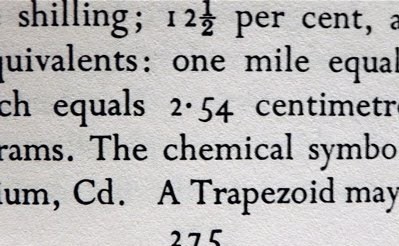Blog
Published: A Century of Flann, Irish Times, October 1 2011Humour down to a science

IN 1927, an Irishman named JW Dunne published an eccentric philosophical tome entitled An Experiment With Time. The author was an engineer, best remembered today (if at all) as a pioneer of British military aviation. But in his book he expounded theories that went far beyond matters aeronautical.
Dunne described “precognitive dreams” he had experienced, in which he claimed to have foreseen major world events. This led him (with somewhat reckless abandon) to conclude that time is not linear, and that human beings are capable of existing simultaneously in the past, present and future.
“The kindest that could be said about Dunne’s ideas is that they were a little off the wall,” says Dr Mark O’Connell, a postdoctoral fellow in the school of English at Trinity College. “A harsher verdict might be that they were completely insane.” Nonetheless, Dunne’s theories found a receptive readership among many leading authors. “Writers were open to Dunne’s ideas in a way that physicists and psychologists were not,” says O’Connell. “Because the imaginative possibilities of his work vastly outweighed its scientific merit, which in any case was negligible.”
J.W. Dunne came to number James Joyce, H.G. Wells and J.R.R. Tolkein among his admirers. But perhaps his greatest achievement, and certainly his most enduring legacy, was to have served as the inspiration for one of Flann O’Brien’s most inspired and demented fictional creations: De Selby, the “physician, ballistician, philosopher and psychologist” whose work is dissected hilariously in The Third Policeman and The Dalkey Archive .
Few comic writers have mined scientific subject matter as relentlessly, or successfully, as Flann O’Brien. It was through the writings of De Selby that the author’s most whimsical scientific flights of fancy were given free rein.
Indeed De Selby’s “atomic theory”, concerning the exchange of atoms between bodies in close contact, gives rise to one of the most celebrated passages in the book, in which Sergeant Pluck comments on “the number of people in these parts who nearly are half people and half bicycles”. For Dermot Diamond, professor of analytical chemistry at DCU, and the author of a two-man show entitled The Science of Flann O’Brien , O’Brien’s preoccupation with matters scientific is unusual for a man with little formal education in the subject.
“He didn’t have a deep grounding in science. But he obviously read about it a lot. He would need to have to deal with complex ideas in his writing.” Perhaps the most surprising compliment Diamond pays to O’Brien – a writer who, lest we forget, once alerted his fellow countrymen to the perils of “contagious abortion” – is to comment on how accurate his understanding of science was.
“He doesn’t get many things wrong. In The Third Policeman he exhibits an understanding of the concept that, when you look at an object, you are actually looking back in time. Not too many people would have understood that then.” Diamond is referring to an experiment in which De Selby contrives to gaze at his own reflection through a telescope and an infinite series of mirrors, until he begins to see a “growing youthfulness”.
“As well as being extremely funny, there’s an awful lot of science going on there.”
Indeed, some of O’Brien’s flighty thought experiments foreshadowed real life scientific breakthroughs decades later. In one case, the unnamed protagonist is jabbed with a spear whose tip is so thin it goes through his hand without puncturing the skin. Here, Diamond believes, O’Brien anticipated the development of nano-fibres used today to treat diabetes.
But it would be a mistake to paint Flann as visionary in the da Vinci mould. In his book No Laughing Matter: The Life and Times of Flann O’Brien , Anthony Cronin makes a convincing case that O’Brien’s view of science has to be seen through the prism of his Catholic faith. For O’Brien, he writes, “there is only one good, the salvation of the individual soul; and only one final catastrophe, damnation. Thus all secular knowledge is largely a joke . . . [And] all scientists are, to some extent, mad scientists.”

October 4th, 2011 at 2:20 pm
What is your take on Flann O’Brien Eoin? Are you a fan?
October 4th, 2011 at 2:53 pm
My take is I’m a fan Darragh. What’s yours?
October 4th, 2011 at 3:58 pm
Yeah, also a fan. Sure he’s the Tupac of metaficional literature.
October 4th, 2011 at 10:21 pm
I started The Third once many years ago but I have to admit I never finished it. I really must get around to picking it up again and finishing it off. I think they’re making a film of it now so maybe I’ll wait to see that instead.
October 4th, 2011 at 11:54 pm
@ Darragh – Lets just hope there isn’t a sex tape.
@ Sean – I’m pretty sure that’s At Swim Two Birds:
http://www.bbc.co.uk/news/uk-northern-ireland-14105242
October 5th, 2011 at 12:36 am
Third Policeman would make a better film
October 5th, 2011 at 9:09 pm
Isn’t it the “theory of mollycules” rather than atomic theory, Eoinser? Nice piece, anyway!